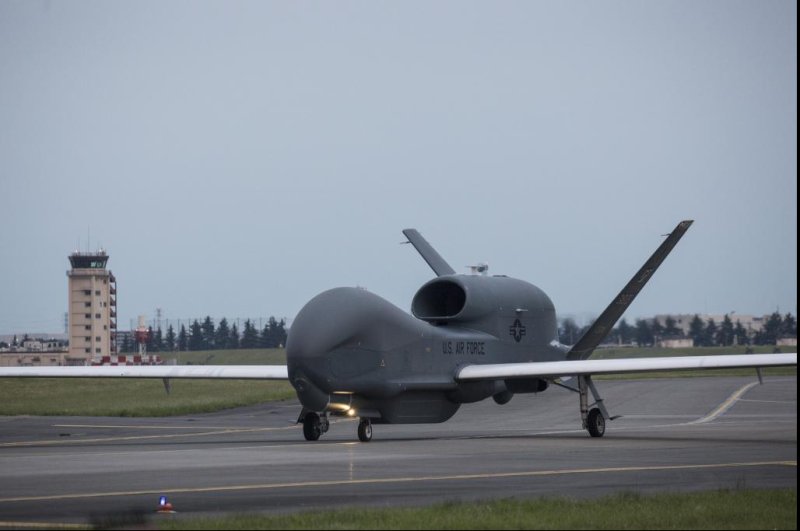Global Hawk UAV on take-off. Photo courtesy of U.S. Air Force
June 14 (UPI) -- The Missile Defense Agency is looking into acquiring and deploying a laser-armed drone to intercept and shoot down intercontinental ballistic missiles.
The MDA Advanced Technology Directorate has said it needs a high-altitude long-endurance unmanned aerial vehicle with sufficient payload capacity to carry a high-energy laser. It would be designed to intercept ICBMs during their boost phase. It has not ruled out a manned platform as well.
The solicitation on the Federal Business Opportunities website reads, "The results of this RFI [request for information] will inform future program options for maturing BPI technology and capability following the current Low Power Laser Demonstrator (LPLD) effort.
"Proposed aircraft should be able to maintain continuous positive ground control and are expected to operate from the Pacific Missile Range Facility in Hawaii and Edwards Air Force Base in California,"
Specifications listed include a flight altitude of at least 63,000 feet, the endurance to stay on station for at least 36 hours after a transit of 1,900 miles, and a cruising speed of up to Mach .46 while patrolling its station.
It needs to be able to carry a payload between 5,000 and 12,500 pounds. It needs sufficient power generation to operate a 140-kilowatt laser, with the possibility of up to 280 kw or more. It needs to be able to operate the laser for at least 30 minutes without affecting flight performance and be capable of carrying a 1- to 2-meter optical system for the laser.
The MDA is responsible for the defense of U.S. territory and its allies from ballistic missile threats. It coordinates a network of land-based and ship-based missile interceptors along with radars and satellites to detect and destroy enemy ballistic missiles.
ICBMs are at their most vulnerable during their boost phase. A UAV capable of targeting them before they exit the atmosphere would greatly increase the possibility of intercept.















